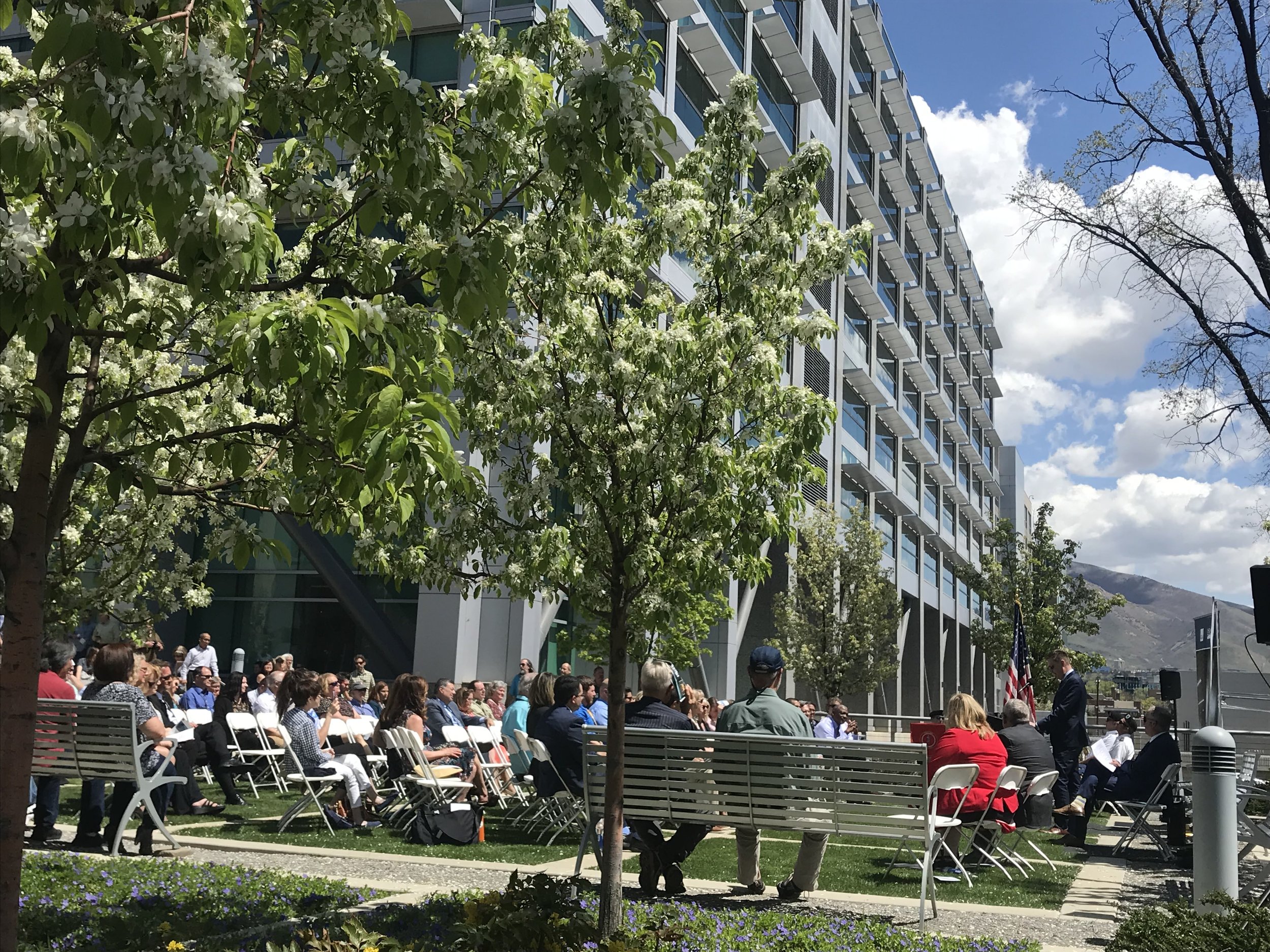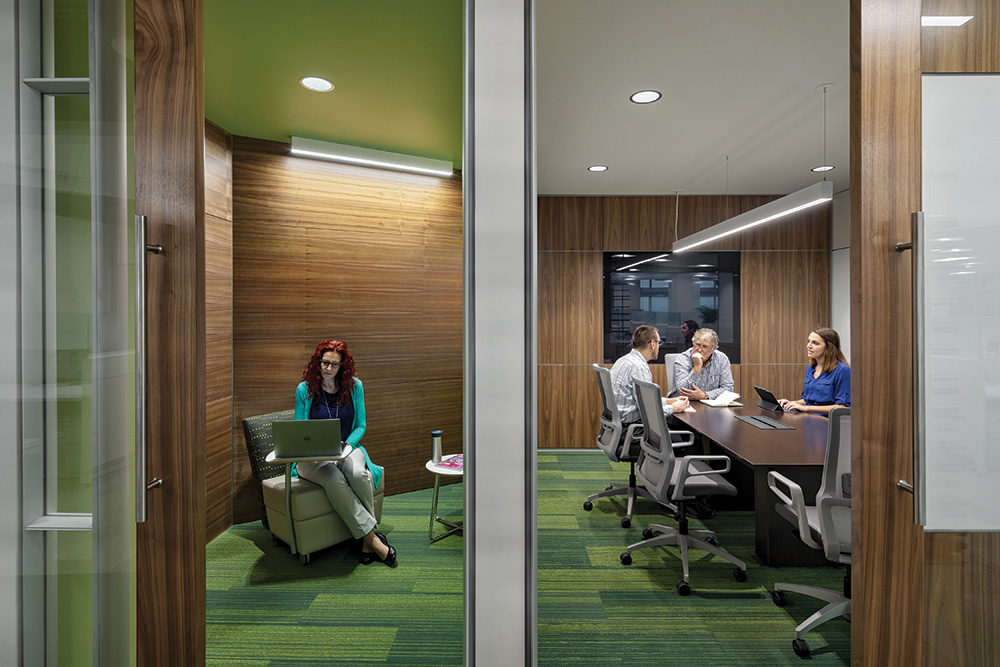It will be the first time since 1958 that Murray City Hall will be housed in a building constructed specifically to be a city hall. The city’s main digs, for the last 70 years, have been in renovated buildings, like a furniture store and, presently, in the former Arlington Elementary building. Like its previous three iterations, Murray City Hall has expanded.
Murray City’s elected officials reviewed a site plan and concept drawings for a new city hall building during the July 15 Committee of the Whole meeting. While the concept plans have yet to be adopted, it is proposed that city hall move to historic downtown land between 4800 South and 5th Avenue and Box Elder and Poplar Streets.
The city purchased Arlington Elementary School, constructed in 1937, and remodeled it to accommodate city functions and began operating at this site in 1982. After 37 years, the city has grown, just as the upkeep and demand for services in the former schoolhouse has increased.
The new, approximately 85,000-square-foot building is sited to provide frontage along 4800 South, Hanauer Street and 5th Avenue. Its two main entrances face north and south and connect in a public lobby.
According to Murray Chief Administrative Officer Doug Hill, “The fixed limit of construction costs (budget) for the new city hall is $28,000,000. This does not include other associated costs, such as design and commissioning fees, furniture, fixtures and equipment, land acquisition, demolition of the old fire station, cell tower relocation and public art.”
A large public plaza is planned along 5th Avenue and Hanauer Street. The city’s master plan envisions 5th Avenue as a festival street. The plaza will provide a venue for active and passive uses by Murray residents, such as evening concerts, art festivals, food truck gatherings and holiday events. The city is in the midst of a roadway project to extend Hanauer Street south of 4800 South, such that it will become the eastern boundary of the city hall site.
“The city plans to bond (borrow) for the project and will repay the bonds (debt) with existing sales tax revenue. No new tax increases are planned to fund city hall,” Hill said.
With the incorporation of city hall, the plaza, and new fire station (currently under construction), the area will be officially christened the Murray Civic Center.
In a press release, Mayor Blair Camp stated, “The new, modern city hall will better serve our citizens by housing more city services in one location and will help revive this underutilized area in the heart of our downtown.”
The city’s statement also included its intent for the new Civic Center: “The vision for the Murray Civic Center is to become the emotional heart of Murray City. This will be accomplished by providing a Civic Center that is unique to Murray City and more than just a building. The exterior spaces and the building will work together to accomplish this goal. The project will celebrate Murray’s independent spirit by providing a unique design that creates a destination and reinforces the strong identity of Murray.”
The city is hoping to break ground March of 2020, with completion slated for late 2021. The city has selected GSBS Architects and Layton Construction Company on this project. Once the new city hall is occupied, the city intends to sell the old Arlington School building.
City leaders hope the civic center will be a gathering place for the community. The city’s official announcement stated, “The Civic Center will be inclusive and welcoming to the community and will celebrate the accessibility and transparency of the Murray City government. It will be responsibly designed with functionality and sustainability at the forefront. The project will also be a catalyst for economic development in the surrounding area and help Murray City realize its City Center District Master Plan.”

![IMG_2980[4].jpg](https://images.squarespace-cdn.com/content/v1/5395dbcbe4b032d797ffa5d1/1578673044023-FALNROL9GL3BSWRAHN7U/IMG_2980%5B4%5D.jpg)













